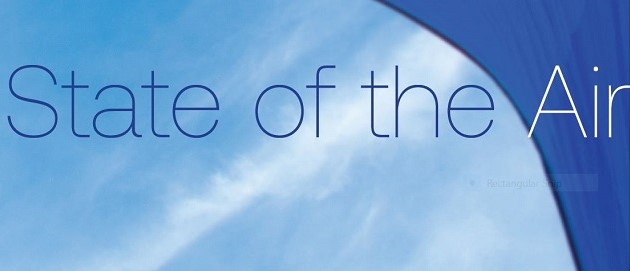Local air quality suffered because wildfire smoke caused spikes in harmful fine particles during the summers of 2017 and 2018, according to the American Lung Association’s 21st annual “State of the Air” report.
Whatcom County air quality received an “F” grade for 24-hour particle pollution because of smoke impacts. Skagit County received a “D” grade. The report includes data from the years 2016-2018.
“We expected this because of the wildfire smoke in back-to-back summers,” said Mark Buford, the Northwest Clean Air Agency’s executive director. “And we expect next year’s report will be similar because data from 2017 and 2018 will again be included.”
Buford emphasized that we generally enjoy good air quality in Island, Skagit and Whatcom counties.
For example, Bellingham tied for seventh place among the cleanest U.S. cities for year-round particle pollution. Both Whatcom and Skagit counties received passing grades for year-round particle pollution.
“The low grades for 24-hour pollution are tied directly to wildfire smoke. Local air quality would have been in the ‘A’ grade range if the spikes in fine particles (PM2.5) contained in wildfire smoke were factored out of our data,” he said. “But that doesn’t change the reality that wildfire smoke heavily impacted air quality and local residents on a number of days in both 2017 and 2018.”
The “State of the Air” report is a nationwide look at particle and ozone pollution – two widespread air pollutants that are dangerous to public health.
The report uses data from official air quality monitors submitted by air quality agencies and estimates respiratory disease rates to provide a comparative picture of risks to people’s health. The report only uses data from specific kinds of monitors, so it does not include NWCAA data for Island County and other area cities. NWCAA data shows similar air quality trends in those areas.
Among the report’s conclusions:
- Skagit County received an overall “A” grade for ozone pollution, ranking it among the cleanest U.S. counties for ozone pollution.
- Whatcom County received a “B” for ozone pollution, likely because wildfire smoke contributed to two days of higher-than-usual ozone readings in 2018.
“We appreciate the hard work people and businesses in our area do to improve and protect air quality, but work remains to be done,” Buford said. “So it’s crucial for NWCAA to continue efforts to limit the threats to air quality that the agency can control, such as industrial emissions and illegal burning.
“And as we enter another wildfire season with already-dry conditions, it’s important for everyone to do whatever they can to limit the potential of igniting a wildfire,” he noted.
He said NWCAA coordinates with local health officials, fire marshals, fire districts, and forest management agencies as they work to reduce wildfire risk.
If you want to take a closer look at your local air quality, NWCAA has eight air quality monitoring locations in Island, Skagit and Whatcom counties. Go to the Air Quality Center on our website, https://nwcleanairwa.gov, to see real-time air quality gauges and data trends.
The Northwest Clean Air Agency is responsible for enforcing federal, state and local air quality regulations in Island, Skagit, and Whatcom counties. In addition to permitting and regulating industrial sources of air pollution, the agency provides services and information related to asbestos, indoor air quality, outdoor burning, wood stoves, and fireplaces. More information about the agency is available at https://nwcleanairwa.gov.
